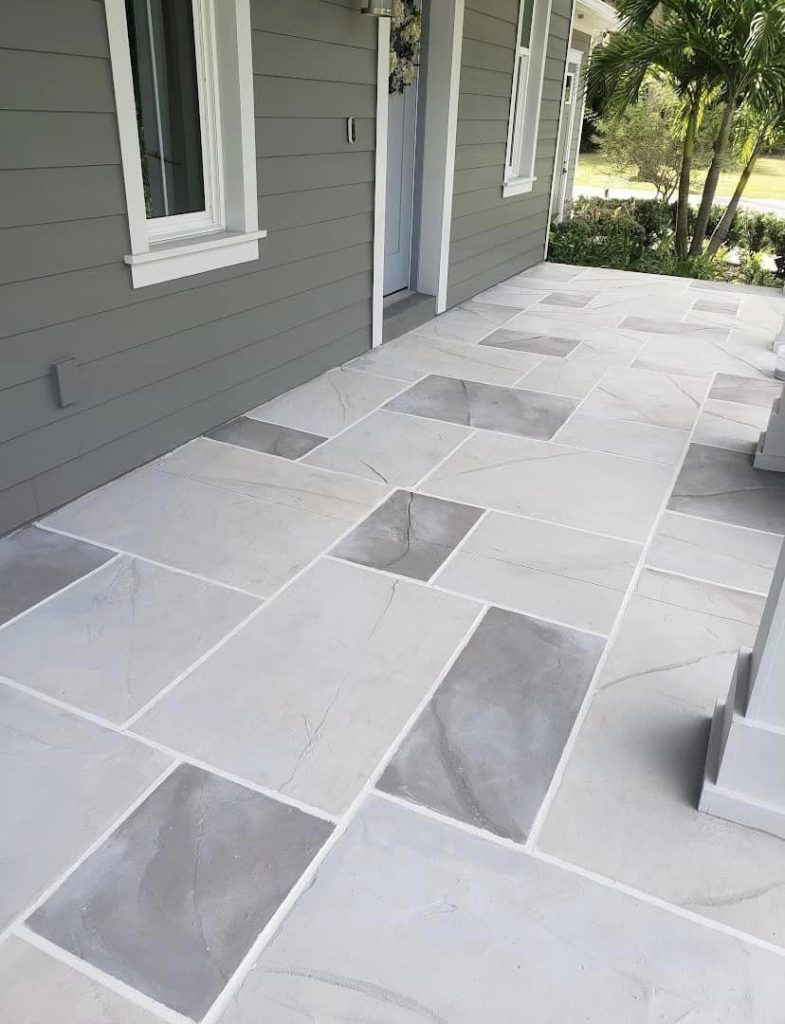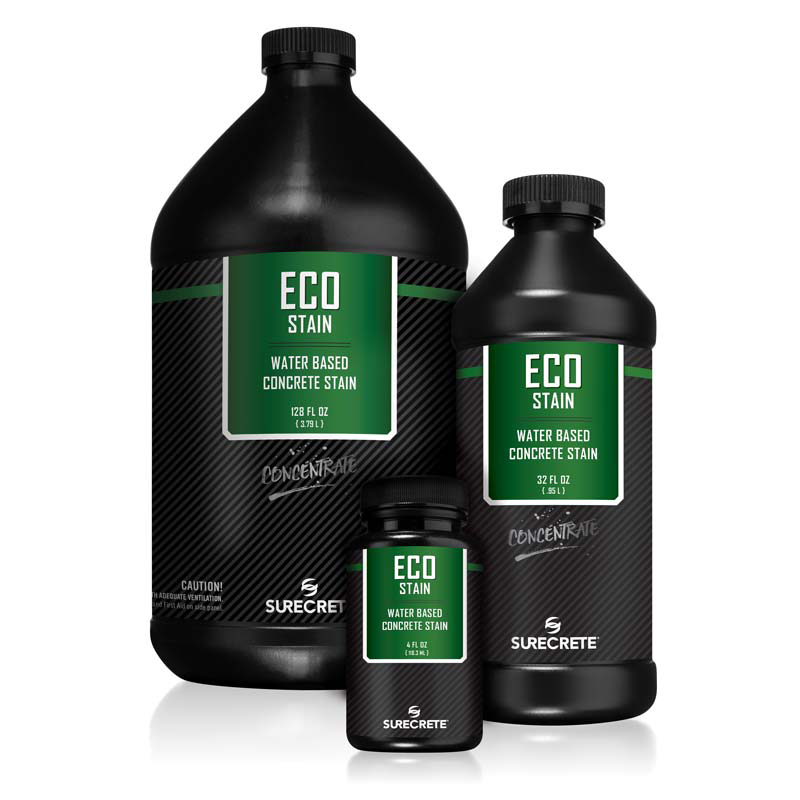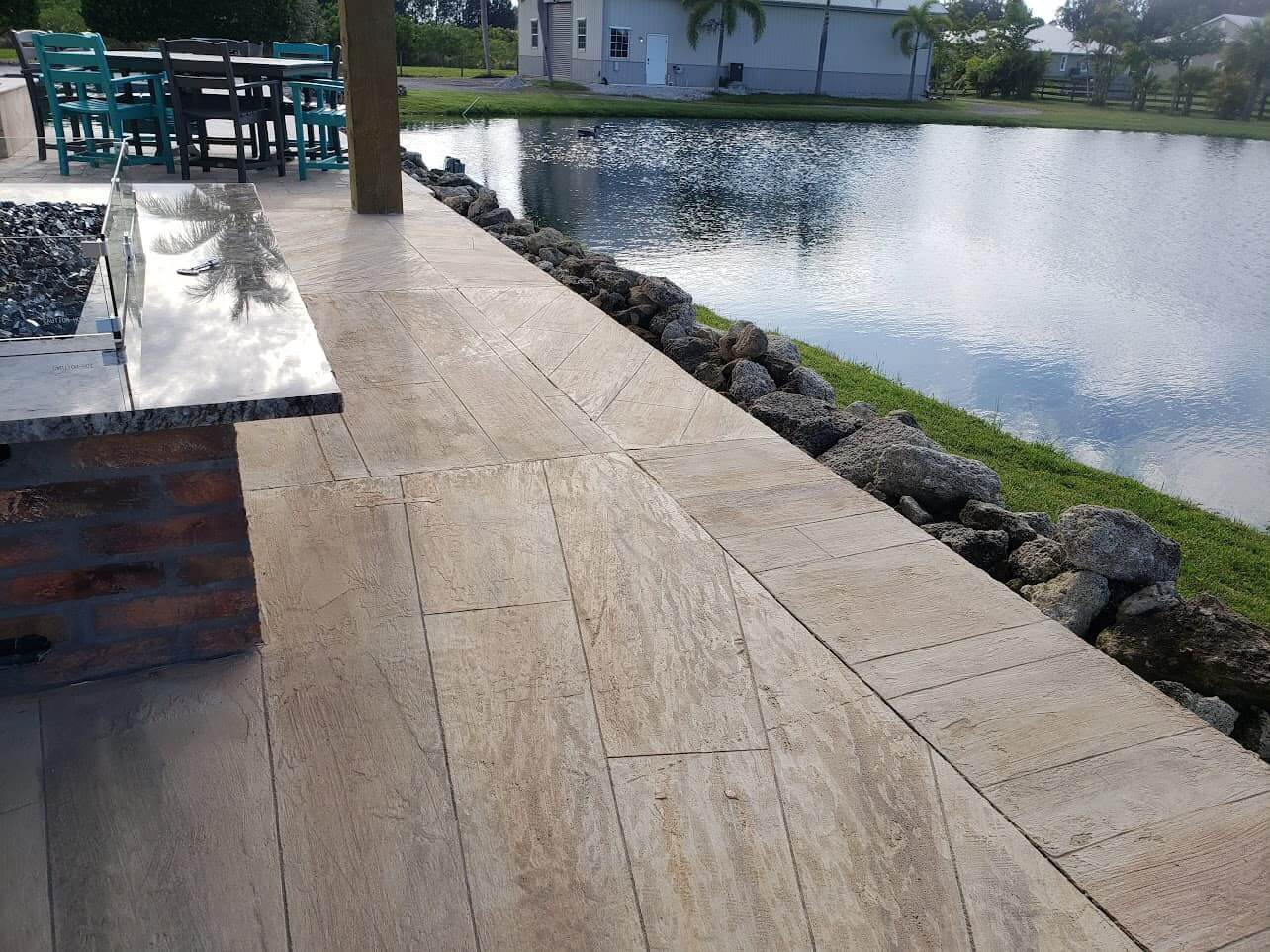When it comes to staining concrete, there are various products you can use. In Florida, contractors have had great success applying acid stains, water-based stains, paints, and dyes. No doubt, you have your personal favorite that you have grown accustomed to.
One of our favorite UV-Stable concrete stains at Select Surface Solutions is Eco-Stain by SureCrete. This product is an ideal color agent due to its wide color palette, ease of application, and quick project sealing. It creates amazing colors for new projects, has the ability to save projects that have gone awry and can be used on both flat and vertical surfaces.
What is Eco Stain? It is the only concrete stain in the industry that is 100% water-based and environmentally friendly. It can be used on both interior and exterior cement-based surfaces. The stain is made from high-grade micronized pigments to ensure that the colors in your project are UV-stable and ready for your choice of sealer. It works by utilizing the concrete’s porosity and its ability to absorb moisture to evenly distribute the pigments.
The application method, whether it’s a pump-up sprayer, airless sprayer, sponge, brush, or roller, will determine whether the stain applies uniformly like a dye, creates a modeled effect like an acid stain, or a combination of the two.
UV-Stable Concrete Stain Colors

Did we mention the extensive color offering? Eco-Stain comes available in 29 UV-stable colors. Each of these uv-stable concrete stain colors can be diluted up to 10:1 to create virtually any color stain color desired. You can mix colors or apply them on top of each other to create layers of color.
The Top 9 Eco Stain colors for 2024 include Espresso, Domino, Burnt Crimson, Kayak, Beechnut, Walnut, Pewter, Navy Blue and Titanium Gray. If you want to see all available colors click here.
What types of sealers work best with it?
As soon as Eco Stain has dried to the touch, it’s ready to be sealed since there’s no chemical reaction involved. Acrylic sealers are the preferred choice for exterior projects, with both solvent-based and water-based versions working well.
For interior applications, contractors often use epoxy, polyurethanes, and polyaspartics, either individually or in combination, depending on the level of protection required for the specific area.
We provide sealers and coatings from top brands such as SureCrete, TK Products, Coatings Solutions, Scofield, and Butterfield.
What sizes do these UV-Stable Concrete Stains come in?

Eco-Stain comes in three different sizes, each designed to match the color chart. Please note that the color chart is based on two applications of Eco-Stain at “standard strength.” The sizes include a 4-oz sample bottle, 32 oz and 128 oz. To ensure color consistency, you must follow the mixing instructions for that exact size to ensure you are at “standard strength.”
The 4-ounce sample bottle comes in “standard strength”. No dilution is required to match the color chart. Eco-Stain can be diluted, if desired, to create a new shade not on the color chart. This dilution can vary from “standard strength” to approximately four parts water to one part Eco-Stain™ (4:1).
Both the 32-oz and 128-oz bottles are concentrated Eco-Stain, designed to be mixed with water in order to match the color chart. To use them properly thoroughly shake the bottle to evenly disperse pigment for 10 to 15 seconds. Pour the Eco-Stain into a mixing container add the specified ounces of clean water, and then mix for 10 to 15 seconds. At this point, you have created a “standard strength” Eco-Stain.
Don’t forget that you can further add water, diluting the “standard strength” if desired. Creating a new shade not on the color chart. This dilution can vary from one-part Water & EcoStain to approximately ten parts water to one part Eco-Stain (10:1).

